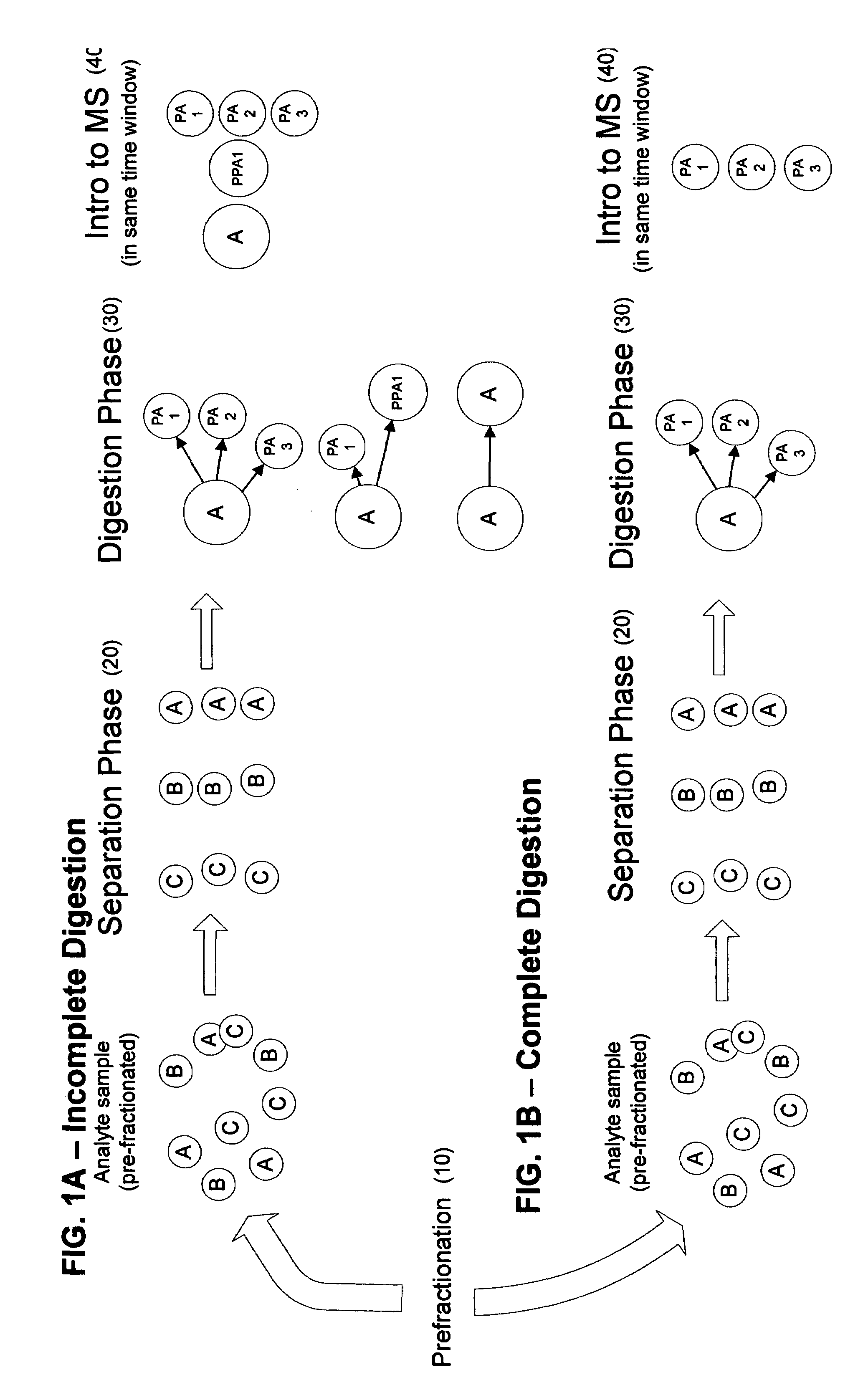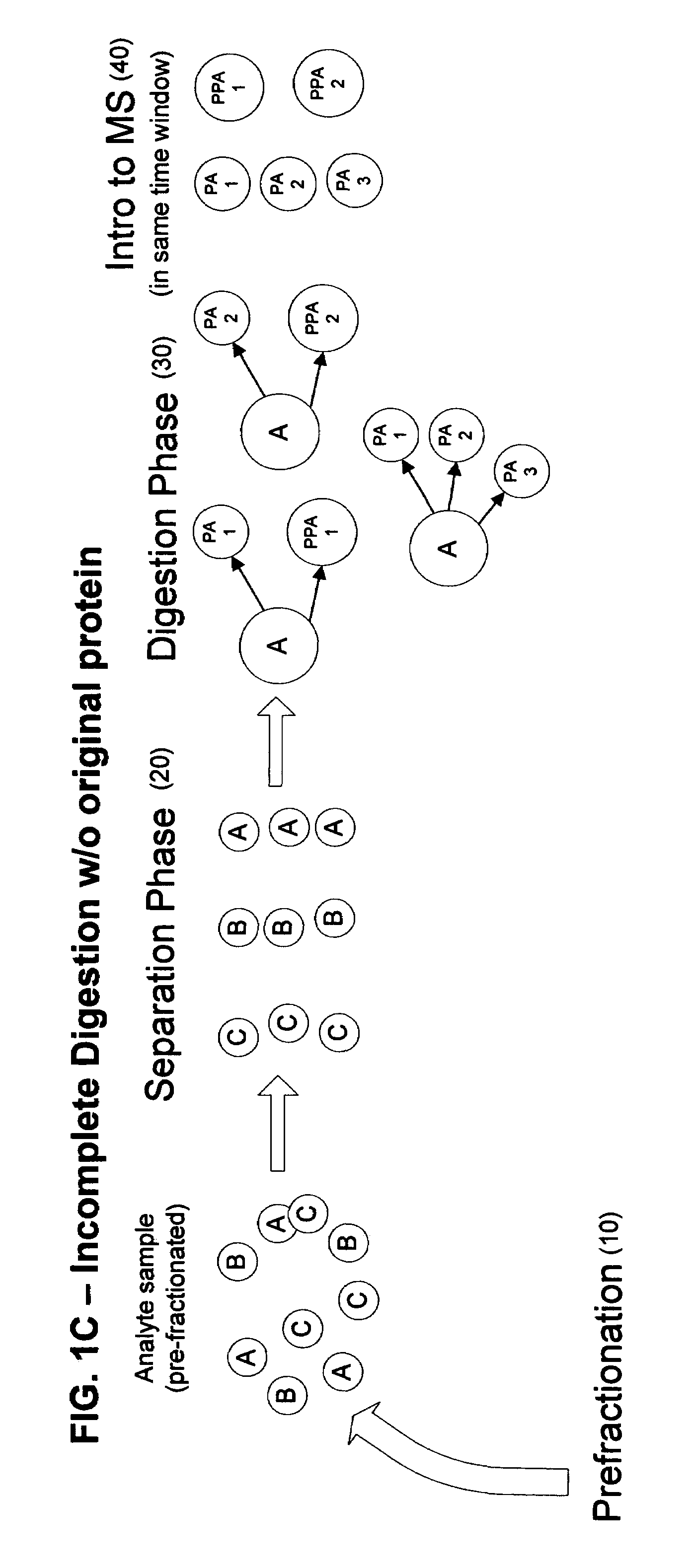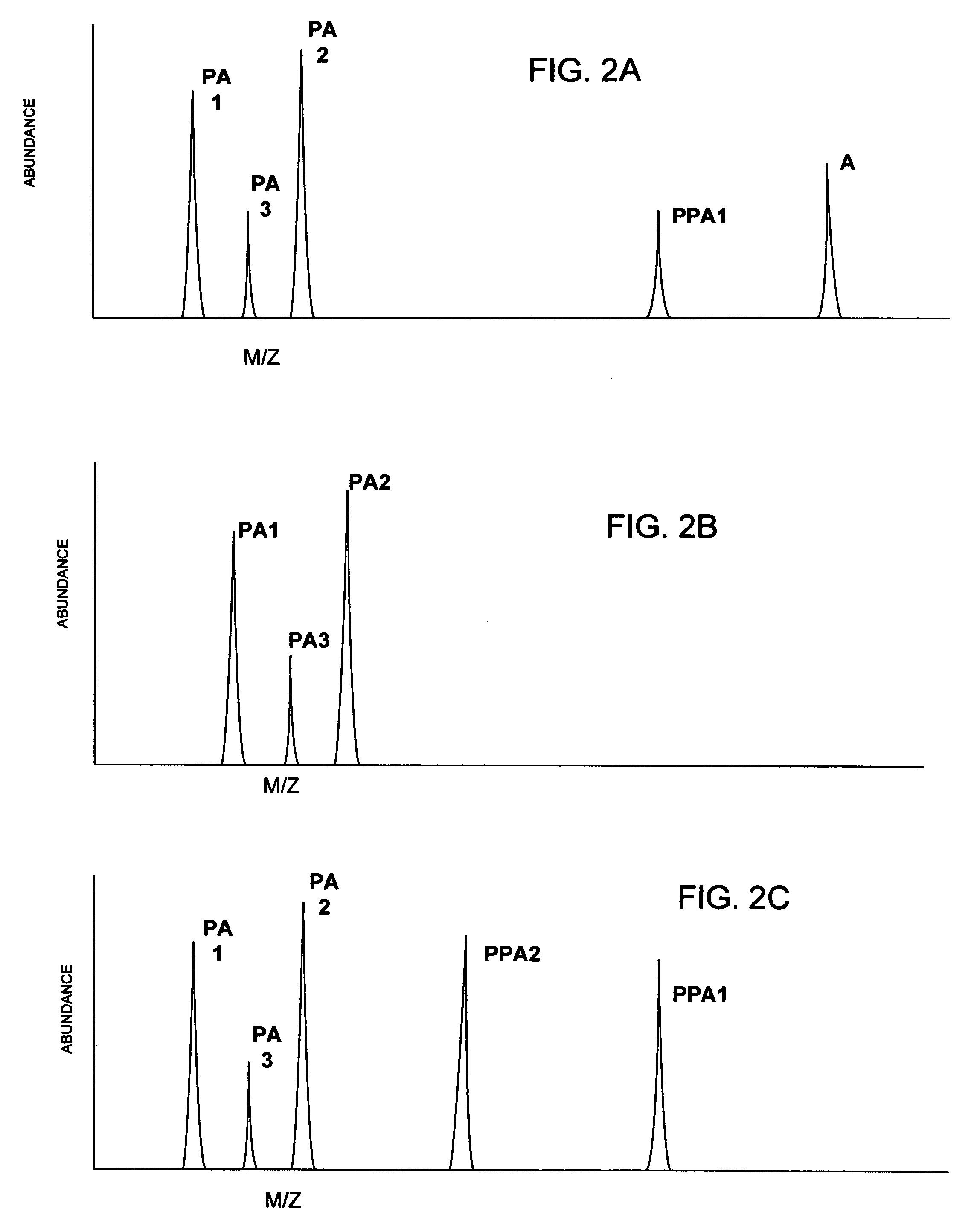Linear high-throughput proteomics
a high-throughput, proteomic technology, applied in the field of proteomics, can solve the problems of complex analysis, application of mass spectrometric techniques, and inability to determine the identity of a large protein molecule, and achieve the effect of facilitating identification and structural elucidation
- Summary
- Abstract
- Description
- Claims
- Application Information
AI Technical Summary
Benefits of technology
Problems solved by technology
Method used
Image
Examples
Embodiment Construction
[0024]As used in this specification and the appended claims, the singular forms “a,”“an,” and “the” include plural referents unless the context clearly dictates otherwise.
[0025]According to the present invention, a linear throughput method for analyzing proteins is provided to address the problem of the lack of association of peptides to each other and to particular proteins during spectrometric analysis, so that they may be more accurately identified and characterized. In this linear throughput method, the relationship between peptides (or digested proteins, which may include polypeptides when digestion is incomplete) that are constituents of the same protein is maintained. The term used herein to describe this relationship among the peptides derived from a single protein is “covariant”. Each set of covariant digested proteins is analyzed within the same time window within a mass spectrometer and inversely, digested proteins that are not covariant are not analyzed within the same t...
PUM
| Property | Measurement | Unit |
|---|---|---|
| mass spectrometer | aaaaa | aaaaa |
| time | aaaaa | aaaaa |
| mass | aaaaa | aaaaa |
Abstract
Description
Claims
Application Information
 Login to View More
Login to View More - R&D
- Intellectual Property
- Life Sciences
- Materials
- Tech Scout
- Unparalleled Data Quality
- Higher Quality Content
- 60% Fewer Hallucinations
Browse by: Latest US Patents, China's latest patents, Technical Efficacy Thesaurus, Application Domain, Technology Topic, Popular Technical Reports.
© 2025 PatSnap. All rights reserved.Legal|Privacy policy|Modern Slavery Act Transparency Statement|Sitemap|About US| Contact US: help@patsnap.com



